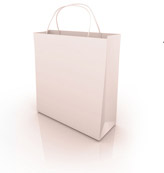
Text or call me, 905-732-4196 or drop me an email PSJ.MK13@gmail.com. You can shop 24/7 and I'm notified of your order and will be in touch to see how I can do to help you! And Mary Kay doesn't give us any territories, I'm able to service you anywhere in Canada! Please refer your family & friends from all over Canada. I'm happy to serve them as well as you, as my wonderful customers. Remember Mary Kay has a 100% Guarantee on all our products, AND you can "try before you buy"!
0item(s) in your Bag
X













